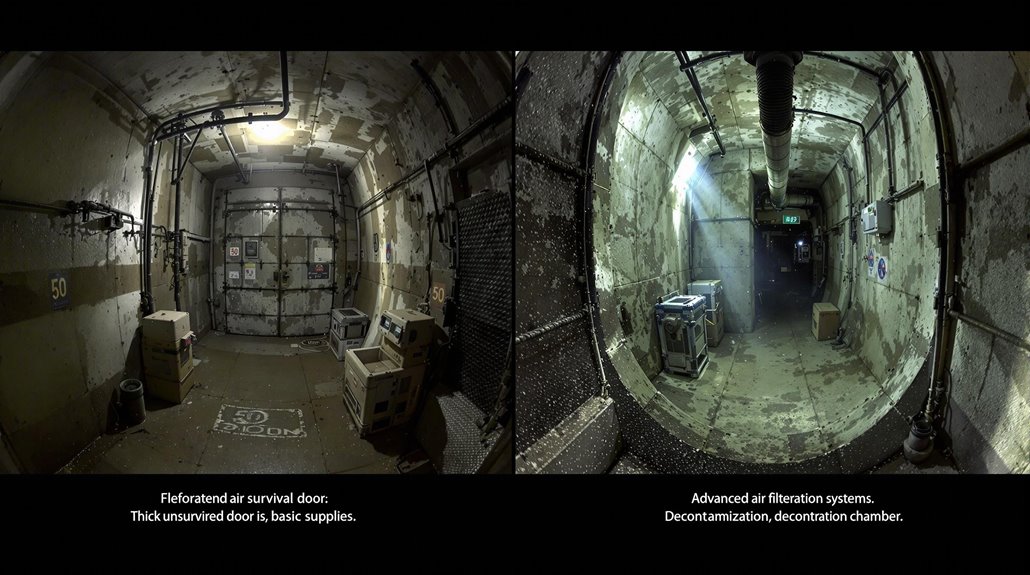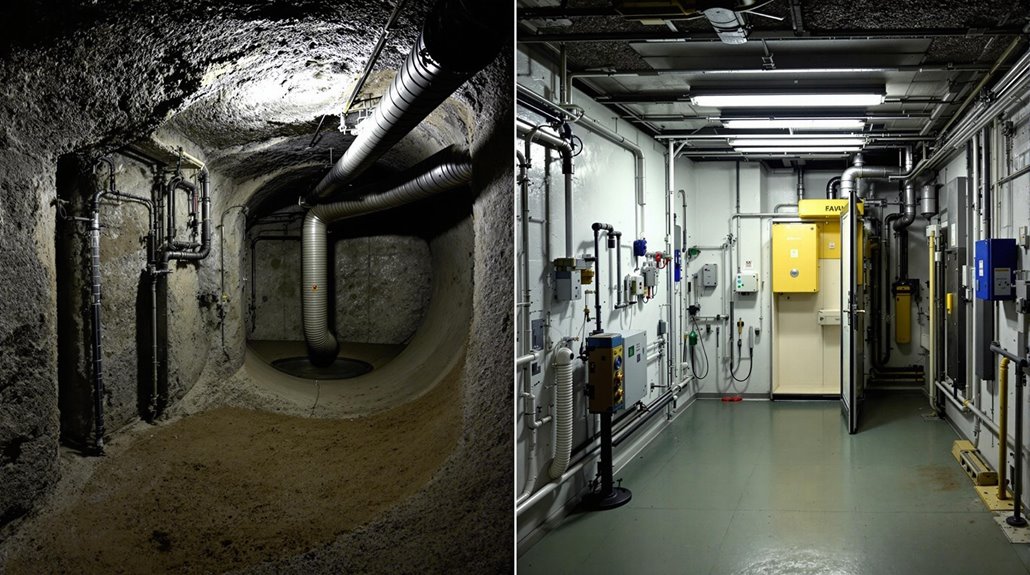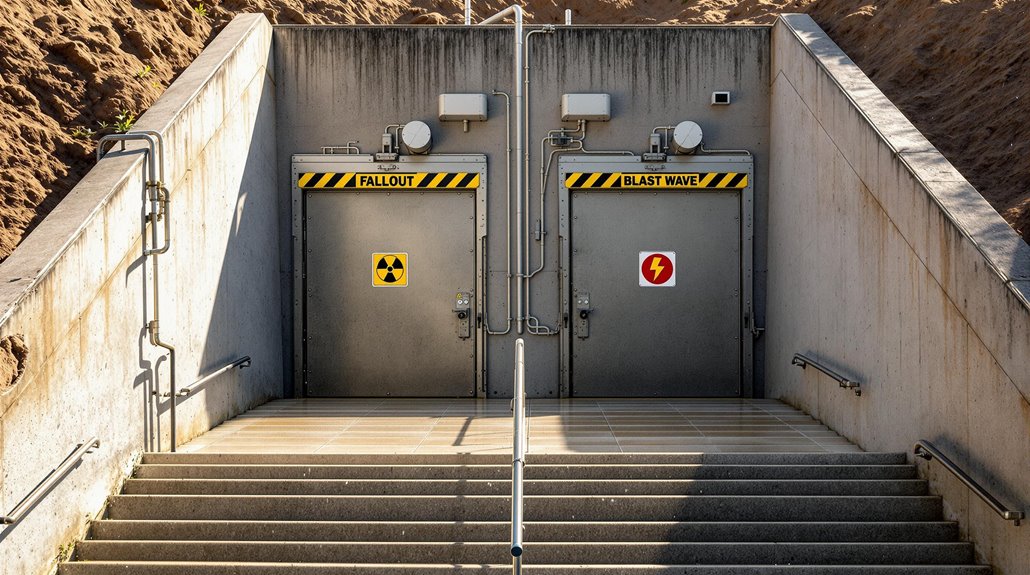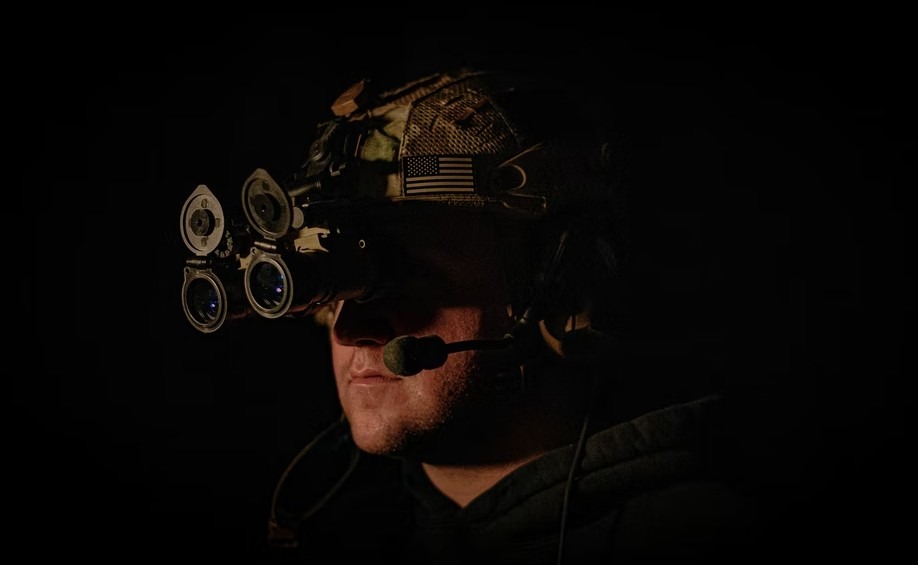What Is the Difference Between a Bomb Shelter and a Fallout Shelter?

Bomb shelters and fallout shelters serve different purposes in nuclear emergencies. You'll find bomb shelters designed for immediate protection from explosions and blast effects, with reinforced walls to withstand direct impacts. In contrast, fallout shelters focus on long-term radiation protection through specialized shielding, advanced filtration systems, and underground construction.
While both offer protection, they're built differently based on their primary threats. Understanding these key differences can help you choose the right shelter for your needs.
Understanding Basic Shelter Types and Their Purposes
While both bomb shelters and fallout shelters serve as protective structures during nuclear events, they're designed with distinct purposes in mind. You'll find that bomb shelters focus on immediate protection from explosions and initial blast effects, featuring reinforced structures and blast valves to withstand sudden impacts.
In contrast, fallout shelters are engineered specifically to protect you from nuclear fallout and long-term radiation exposure. These structures incorporate specialized materials like thick concrete or lead barriers and advanced air filtration systems to keep radioactive particles out. You'll typically find fallout shelters built in locations farther from potential target areas, as they're meant for extended stays during radiation threats.
When choosing between the two, consider that bomb shelters prioritize immediate blast protection, while fallout shelters emphasize sustained protection from radioactive contamination. Most fallout shelters require a minimum two-week supply of non-perishable food and water to sustain occupants during radiation threats.
Key Design Features and Construction Requirements
The three essential design features of bomb and fallout shelters highlight their distinct construction requirements. In a bomb shelter, you'll need sturdy concrete or steel walls that can withstand the immediate force of explosions and flying debris. Fallout shelters require additional protection through lead shielding or packed earth to block harmful radiation. You'll find bomb shelters typically built closer to ground level with compact designs, while fallout shelters are constructed deeper underground to maximize radiation protection.
Your fallout shelter must include sophisticated air filtration systems to remove radioactive particles, but bomb shelters don't always need this feature. When building a fallout shelter, you'll also need to plan for longer occupancy periods, as you may need to stay inside until radiation levels decrease to safe levels. Both shelter types should avoid flood-prone areas to prevent structural damage and maintain long-term safety.
Protection Levels Against Nuclear Threats

Since nuclear threats pose varying risks, bomb shelters and fallout shelters offer distinctly different levels of protection. A blast shelter primarily shields you from the immediate effects of a nuclear detonation, including shock waves and heat, but may not adequately protect against long-term radiation exposure.
In contrast, a fallout shelter's design prioritizes radiation shielding through thick walls and deep underground construction. While it won't protect you from the initial blast if you're too close to ground zero, it'll keep you safe from the deadly radioactive particles that can persist for weeks or months afterward. You'll need to stay in a fallout shelter much longer than a blast shelter, which is why these structures include extensive life-support systems, air filtration, and extensive supply storage for extended periods. These shelters were a cornerstone of civil defense strategy during the Cold War era, with many being stocked with essential medical supplies and provisions.
Survival Duration and Life Support Systems
Life support systems differ dramatically between bomb and fallout shelters due to their intended survival durations. In a bomb shelter, you'll find basic provisions designed to keep you alive for up to two weeks, including essential air filtration and emergency rations. However, these aren't sufficient for long-term protection against radiation poisoning.
Fallout shelters, built for extended nuclear survival, offer more thorough life support systems. You'll have access to advanced air filtration that removes radioactive particles, water purification systems, and food storage facilities that can sustain you for several months. These shelters include decontamination areas and additional storage space for supplies.
The ventilation systems are specifically engineered to maintain a safe, breathable environment while filtering out dangerous radioactive particles during your extended stay. Proper waste management solutions are essential in both shelter types, with fallout shelters requiring more sophisticated systems for long-term sustainability.
Strategic Location and Installation Considerations

Strategic placement of both shelter types requires careful consideration of different threat scenarios. When you're planning a bomb shelter, you'll want to focus on urban or military areas where a Nuclear Blast is most likely to occur. A bomb shelter is a structure that's typically built above ground or in building basements to protect against immediate blast effects.
In contrast, you'll find fallout shelters more commonly in rural locations, away from potential blast zones. They're usually constructed underground to maximize protection from radiation. While bomb shelters can be more flexibly designed since they only need to withstand a single detonation, fallout shelters demand more specific requirements. They need sturdy ventilation systems and thicker walls for sustained protection during extended nuclear events. Their underground placement provides better shielding from long-term radioactive particles.
Essential Equipment and Supply Requirements
While both shelter types require basic survival supplies, their equipment needs differ considerably based on their protective functions. In bomb shelters, you'll need heavily reinforced walls and doors to withstand explosive blasts, along with basic air filtration systems and emergency supplies like food, water, and medical kits.
Fallout shelters demand more sophisticated equipment due to radiation threats. You'll require specialized radiation detection devices to monitor exposure levels and advanced air filtration systems that can remove radioactive particles. Since you might need to stay in a fallout shelter for weeks or months, you'll also want backup power sources and a more extensive supply of provisions. Additionally, you should include decontamination equipment to remove radioactive particles from clothing and skin when entering the shelter.




